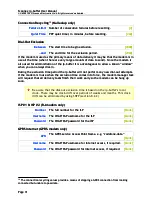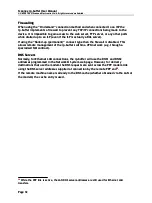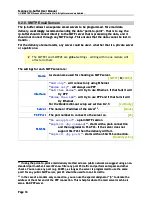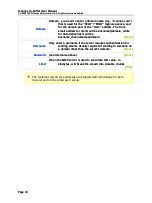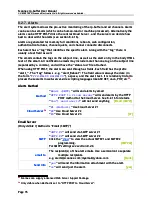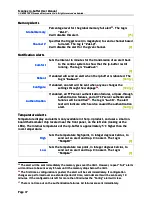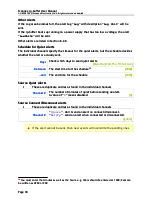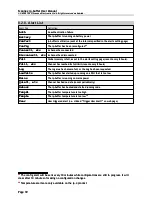
Scannex ip.buffer User Manual
© UK 2007-2021 Scannex Electronics Ltd. All rights reserved worldwide.
8.2.6. SMTP Email Servers
The ip.buffer allows two separate email servers to be programmed. For email data
delivery, we
strongly
recommend sending the data “point-to-point”. That is to say, the
ip.buffer should connect directly to the SMTP server that is processing the data, and it
should not connect through any SMTP relays. This ensures that the data cannot be lost in
transit
For the delivery of email alerts, any server could be used – whether that is a private server
or a public one.
The SMTP#1 and SMTP#2 are
global
settings – editing within one module will
affect all others.
The settings for each SMTP server are:
Name
A screen name used for choosing an SMTP server.
[SMTP1]
&
[SMTP2]
Interface
“
LAN only
” – will connect only using Ethernet
“
Modem only
” – will always use PPP
“
LAN then Modem
” – will try to use Ethernet. If that fails it will
try PPP
“
Modem then LAN
” – will try to use PPP and if that fails it will
try Ethernet.
For the Modem dial-out setup see section 8.2.5
[LAN only]
Server
The name or IP address of the server
[blank]
TCP Port
The port number to connect to the server on.
[25]
TLS/SSL
“
No encryption
” – a plain SMTP session
“
Explicit (by command)
” – starts with a plain connection
and then upgrades to SSL/TLS. If the server does not
support SSL/TLS then the delivery will fail.
“
Implicit (by port)
” – starts with an SSL/TLS connection.
[No encryption]
21
If using the point-to-point email delivery method across a public network we suggest using a non-
standard port number. Some ISPs now filter any port 25 traffic and perform anti-spam and other
checks. You can use any port (e.g. 20025), as long as the server is programmed to use the same
port! For any public SMTP server, port 25 should be used for non SSL traffic.
22
In the case of a modem-only connection, you can use the special designator “
$
” to denote the
address of the other end of the PPP connection. This is helpful where the mail server machine is
also a RAS/PPP server.
Page 33
Scannex ip.buffer User Manual
© UK 2007-2021 Scannex Electronics Ltd. All rights reserved worldwide.
8.2.6. SMTP Email Servers
The ip.buffer allows two separate email servers to be programmed. For email data
delivery, we
strongly
recommend sending the data “point-to-point”. That is to say, the
ip.buffer should connect directly to the SMTP server that is processing the data, and it
should not connect through any SMTP relays. This ensures that the data cannot be lost in
transit
For the delivery of email alerts, any server could be used – whether that is a private server
or a public one.
The SMTP#1 and SMTP#2 are
global
settings – editing within one module will
affect all others.
The settings for each SMTP server are:
Name
A screen name used for choosing an SMTP server.
[SMTP1]
&
[SMTP2]
Interface
“
LAN only
” – will connect only using Ethernet
“
Modem only
” – will always use PPP
“
LAN then Modem
” – will try to use Ethernet. If that fails it will
try PPP
“
Modem then LAN
” – will try to use PPP and if that fails it will
try Ethernet.
For the Modem dial-out setup see section 8.2.5
[LAN only]
Server
The name or IP address of the server
[blank]
TCP Port
The port number to connect to the server on.
[25]
TLS/SSL
“
No encryption
” – a plain SMTP session
“
Explicit (by command)
” – starts with a plain connection
and then upgrades to SSL/TLS. If the server does not
support SSL/TLS then the delivery will fail.
“
Implicit (by port)
” – starts with an SSL/TLS connection.
[No encryption]
21
If using the point-to-point email delivery method across a public network we suggest using a non-
standard port number. Some ISPs now filter any port 25 traffic and perform anti-spam and other
checks. You can use any port (e.g. 20025), as long as the server is programmed to use the same
port! For any public SMTP server, port 25 should be used for non SSL traffic.
22
In the case of a modem-only connection, you can use the special designator “
$
” to denote the
address of the other end of the PPP connection. This is helpful where the mail server machine is
also a RAS/PPP server.
Page 33













